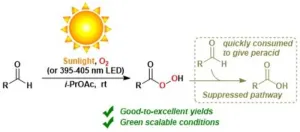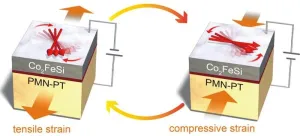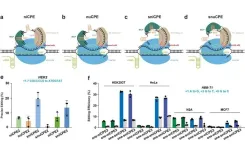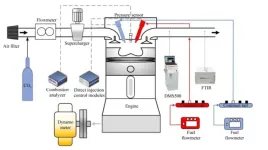Under strict embargo: 10:00hrs GMT 11 January 2024
Peer reviewed
Observational study
People
First prehistoric person with Turner syndrome identified from the Iron Age
Earliest known person with Jacob’s syndrome identified from Early Medieval Period
Individuals with Klinefelter syndrome identified across a range of time periods
New technique developed to measure number of chromosomes in ancient genomes more precisely
Researchers at the Francis Crick Institute, working with University of Oxford, University of York and Oxford Archaeology, have developed a new technique to measure the number of chromosomes in ancient genomes more precisely, using it to identify the first prehistoric person with mosaic Turner syndrome (characterised by one X chromosome instead of two [XX]), who lived about 2500 years ago.
As part of their research published today in Communications Biology, they also identified the earliest known person with Jacob’s syndrome (characterised by an extra Y chromosome - XYY) in the Early Medieval Period, three people with Klinefelter syndrome (characterised by an extra X chromosome - XXY) across a range of time periods and an infant with Down Syndrome from the Iron Age.
Most cells in the human body have 23 pairs of DNA molecules called chromosomes, and the sex chromosomes are typically XX (female) or XY (male), although there are differences in sexual development. ‘Aneuploidy’ occurs when a person’s cells have an extra or missing chromosome. If this occurs in the sex chromosomes, a few differences like delayed development or changes in height can be seen around puberty.
Ancient DNA samples can erode over time and can be contaminated by DNA from other ancient samples or from people handling them. This makes it difficult to accurately capture differences in the number of sex chromosomes.
The team at the Crick developed a computational method which aims to pick up more variation in sex chromosomes. For the sex chromosomes, it involves counting the number of copies of X and Y chromosomes, and comparing the outcome to a predicted baseline (what you would expect to see).
The team used the new method to analyse ancient DNA from a large dataset of individuals collected as part of their Thousand Ancient British Genomes project across British history, identifying six individuals with aneuploidies across five sites in Somerset, Yorkshire, Oxford and Lincoln2. The individuals lived across a range of time periods, from the Iron Age (2500 years ago) up to the Post-Medieval Period (about 250 years ago).
They identified five people who had sex chromosomes which fell outside of the XX or XY categories. All were buried according to their society’s customs although no possessions were found with them to shed more light on their lives.
The three individuals with Klinefelter syndrome lived across very different time periods, but they shared some similarities - all were slightly taller than average and showed signs of delayed development in puberty.
By investigating details on the bones, the research team could see that it was unlikely that the individual with Turner syndrome had gone through puberty and started menstruation, despite their estimated age of 18-22. Their syndrome was shown to be mosaic -some cells had one copy of chromosome X and some had two.
Kakia Anastasiadou, PhD student in the Ancient Genomics Laboratory at the Crick, and first author of the study, said: “Through precisely measuring sex chromosomes, we were able to show the first prehistoric evidence of Turner syndrome 2500 years ago, and the earliest known incidence of Jacob’s syndrome around 1200 years ago. It’s hard to see a full picture of how these individuals lived and interacted with their society, as they weren’t found with possessions or in unusual graves, but it can allow some insight into how perceptions of gender identity have evolved over time.”
Pontus Skoglund, Group Leader of the Ancient Genomics Laboratory at the Crick, said: “Our method is also able to classify DNA contamination in many cases, and can help to analyse incomplete ancient DNA, so it could be applied to archaeological remains which have been difficult to analyse.
“Combining this data with burial context and possessions can allow for a historical perspective of how sex, gender and diversity were perceived in past societies. I hope this type of approach will be applied as the common resource of ancient DNA data continues to grow.”
The team worked with archaeologists from the University of Oxford, the Wells and Mendip Museum, University of York, University of Bradford, Oxford Archaeology, York Osteoarchaeology and Network Archaeology, acknowledging support from Lincolnshire County Council, Magdalen College and Balfour Beatty for National Highways.
Rick Schulting, Professor of Scientific and Prehistoric Archaeology at the University of Oxford, said: “The results of this study open up exciting new possibilities for the study of sex in the past, moving beyond binary categories in a way that would be impossible without the advances being made in ancient DNA analysis.”
-ENDS-
For further information, contact: press@crick.ac.uk or +44 (0)20 3796 5252
Notes to Editors
Reference: Anastasiadou, K. et al. (2023). Detection of chromosomal aneuploidy in ancient genomes. Communications Biology. 10.1038/s42003-023-05642-z.
An infant with Down Syndrome (an extra chromosome 21) from the Iron Age was also found in Wetwang Slack in Yorkshire.
The individual with Turner syndrome (X0) was identified in Charterhouse Warren in Somerset. The individuals with Klinefelter syndrome (XXY) were found in Wetwang Slack in Yorkshire, the medieval cemetery under Longwall Quad, Magdalen College in Oxford, and Trinity Burial Ground, Kingston-Upon-Hull. The individual with Jacob’s syndrome (XYY) was found in the Lincoln Eastern Bypass.
The Francis Crick Institute is a biomedical discovery institute dedicated to understanding the fundamental biology underlying health and disease. Its work is helping to understand why disease develops and to translate discoveries into new ways to prevent, diagnose and treat illnesses such as cancer, heart disease, stroke, infections, and neurodegenerative diseases.
An independent organisation, its founding partners are the Medical Research Council (MRC), Cancer Research UK, Wellcome, UCL (University College London), Imperial College London and King’s College London.
The Crick was formed in 2015, and in 2016 it moved into a brand new state-of-the-art building in central London which brings together 1500 scientists and support staff working collaboratively across disciplines, making it the biggest biomedical research facility under a single roof in Europe.
http://crick.ac.uk/
About the University of Oxford
Oxford University has been placed number 1 in the Times Higher Education World University Rankings for the eighth year running, and number 3 in the QS World Rankings 2024. At the heart of this success are the twin-pillars of our ground-breaking research and innovation and our distinctive educational offer.
Oxford is world-famous for research and teaching excellence and home to some of the most talented people from across the globe. Our work helps the lives of millions, solving real-world problems through a huge network of partnerships and collaborations. The breadth and interdisciplinary nature of our research alongside our personalised approach to teaching sparks imaginative and inventive insights and solutions.
Through its research commercialisation arm, Oxford University Innovation, Oxford is the highest university patent filer in the UK and is ranked first in the UK for university spinouts, having created more than 300 new companies since 1988. Over a third of these companies have been created in the past five years. The university is a catalyst for prosperity in Oxfordshire and the United Kingdom, contributing £15.7 billion to the UK economy in 2018/19, and supports more than 28,000 full time jobs.
About Oxford Archaeology
Oxford Archaeology (OA) is one of the largest independent archaeological and heritage practices in Europe, with over 400 specialist staff working out of offices in Oxford, Lancaster and Cambridge.
Founded in 1973, we have 50 years of experience in professional archaeology, and a tradition of quality, innovation and service on projects ranging in scale from domestic extensions to international infrastructure. We are also a Chartered Institute for Archaeologists Registered Organisation and, as a registered educational charity, we help people to discover and enjoy their heritage through our publications and outreach. For further information, visit our website https://www.oxfordarchaeology.com/
END









